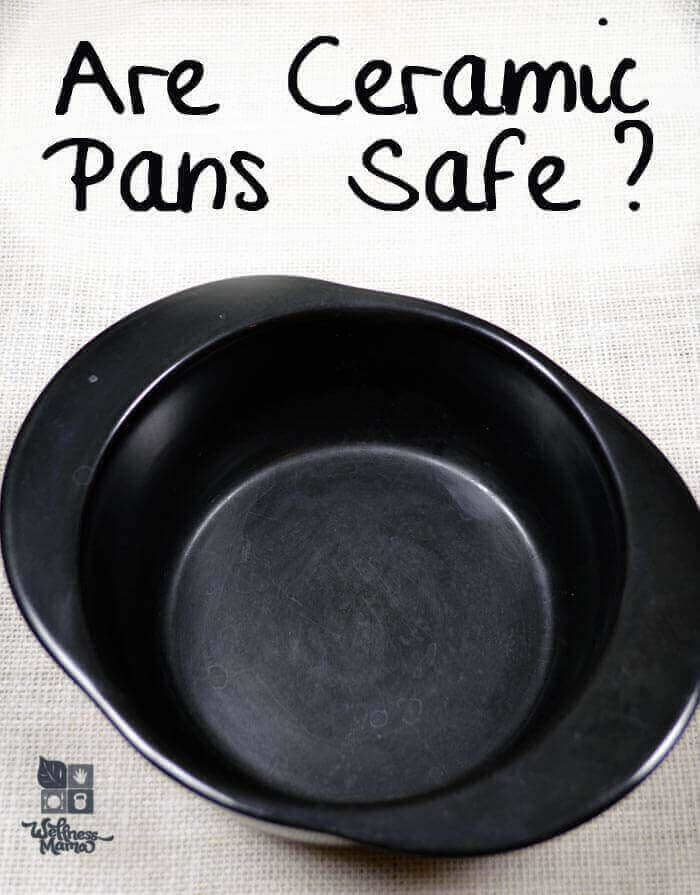I’ve been slowly switching my kitchen over to ceramic pans since I had the chance to try ceramic cookware last year. I researched cookware options for months and wanted to find an option that was:
- Easy to clean
- Cooked evenly
- Was non-scratch or non-stick
- Most importantly: non-toxic
I finally settled on Xtrema ceramic cookware and have been really happy with it.
Since then, I’ve received a few emails asking for more information to support the safety of the glaze used on ceramic cookware.
Is Ceramic Cookware Safe?
I reached out to the company I got my cookware from to find out more information and received this reply:
“Our Xtrema cookware is made of 100% inorganic ceramic minerals and so is our ceramic non-scratch glaze. All ceramic glazes are made of various inorganic minerals and oxides. The oxides give the glaze it’s strength, color and glossiness. Our ceramic cookware and it’s ceramic glaze contain no metals or lead and cadmium. In the USA all ceramic products have to pass California Prop 65 before the product can be sold in the USA. I have attached an article about California Prop 65. Also, we continue to test every shipment that is made to guarantee that our product passes the California Prop 65 standard as well as the USA – FDA standards for lead and cadmium.
We publish our test results on our web site: https://xtrema.com/pages/product-testing We have never found any other cookware company in the world that publishes its tests results for heavy metal leaching as well as their California Prop 65 results for lead and cadmium.”
Why Ceramic?
I personally use ceramic since it cooks evenly and doesn’t leach chemicals. I also have cast iron and stainless steel and use them occasionally, but even “safe” cookware options can be problematic. I avoid traditional non-stick and aluminum pans completely…
From this article:
“Teflon cookware is probably the all-time worst of all cookware. Johns Hopkins Medical Center says the chemical PFOA, used in manufacturing Teflon, is now found in the bloodstreams of nearly everyone in the U.S. Early studies suggest that high PFOA blood levels in humans are linked with cancer, high cholesterol levels, thyroid disease and reduced fertility. Teflon surfaces break down and end up in your food and when heated to high temperatures, emit fumes which cause flu-like symptoms in humans (AKA: polymer fume fever) and can be fatal to birds. Manufacturers have to eliminate PFOA from all cooking products by the year 2015.
Aluminum cookware is one of the most common cookware to use, but can be very toxic as this heavy metal is absorbed into all food cooked in it. The aluminum released into foods during cooking ends up in your body. Excess aluminum has been associated with estrogen-driven cancers and Alzheimer’s Disease.
Copper cookware is the choice of many because it conducts heat so well. Copper cookware releases copper into the food to be eaten and usually also has nickel in the coating, which is another toxic heavy metal and can be very allergenic.
Cast iron cookware is very durable but iron is constantly leaching into the food, changing the enzymes in it. Iron can reach toxic levels in the body with regular use and becomes a pro-oxidant which causes stress, oxidation and eventually disease.
Ceramic, enamel, and glass cookware may be manufactured with lead which can give the product color uniformity. The level of lead in each product is set by the United States – FDA and California Prop 65 – Never cook with anything labeled “for decoration only.
Stainless steel cookware is made from a metal alloy consisting of mostly iron and chromium along with differing percentages of molybdenum, nickel, titanium, copper and vanadium. But even stainless steel allows other metals to leach into the foods. The principal elements in stainless that have negative effects on our health are iron, chromium and nickel.”
What to Do?
As with anything, don’t let the perfect be the enemy of the good. I can’t afford to completely replace all of my cookware overnight, and I don’t think that some of the other options are that bad compared to some other lifestyle factors (not eating vegetable oils, getting Vitamin D, etc) .
I’m slowly asking for safer cookware for birthday and Christmas gifts, and in the meantime, I’m using steel and cast iron when I have to. I do make sure to avoid non-stick and aluminum cookware completely.
If you want to try ceramic cookware, Xtrema has extended a discount code for Wellness Mama readers. Use the code “WM15X” and click here to get a 15% discount.
What cookware do you use? Share below.


Leave a Reply